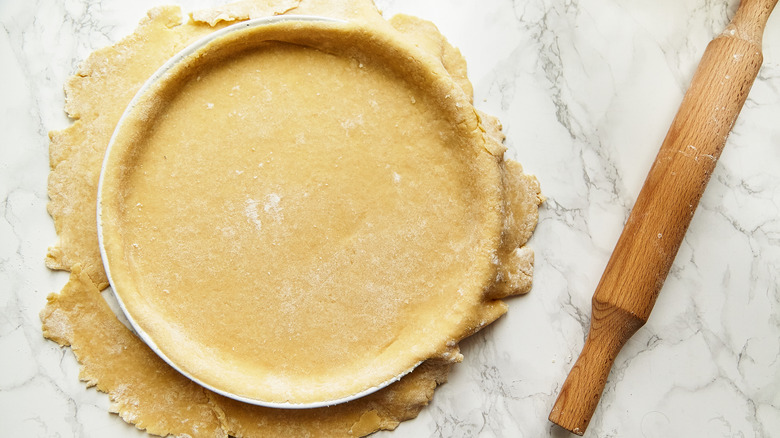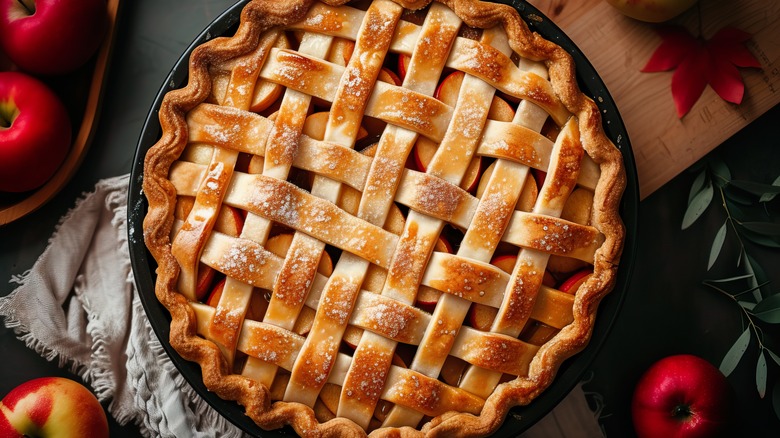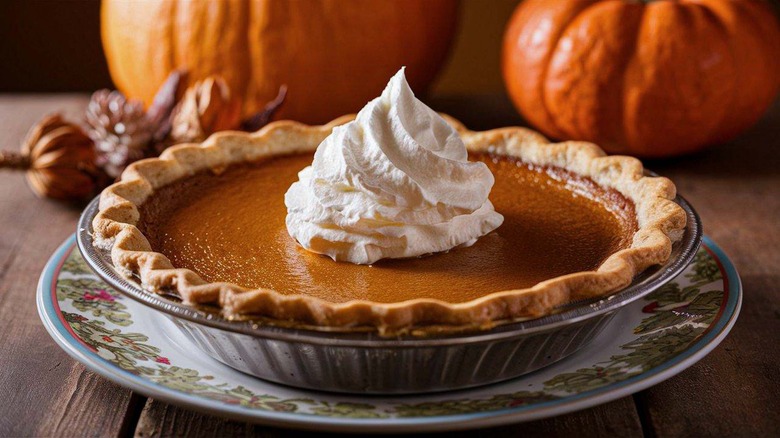How To Properly Store Pie Crust In The Freezer
The most tedious part of baking a homemade pie from scratch is nailing that unforgiving crust. First, you have to perfect the dough itself, and then roll it out so that it's thin enough to be flaky (but also thick and sturdy enough to hold the filling). It needs to be chilled, rested, and then blind-baked, too — all time-consuming but necessary steps to perfect that buttery, flaky pie crust. But you don't have to go through this arduous process every single time you bake a pie: You can always prepare a big batch of crust in one go and then stash it in the freezer for future uses.
Pie crust will stay fresh for anywhere between three to six months in the freezer. However, the key is to store it well so that it doesn't get freezer burn in the process and become dehydrated from exposure to the frigid, dry air of the appliance. You can usually tell whether food is freezer burned by the frosty layer of icicles that form on top. Although this isn't necessarily an indicator of spoilage, it can certainly change the taste and texture of food for the worse, including pie crust. You might find improperly stored pastry shells turn rough and gritty, and their delicate, buttery flavor become more bland. It's important to stave off freezer burn to preserve the quality of your frozen pie crusts, and there are a few tips to help.
How to avoid freezer burned pie crusts
The golden rule for preventing freezer burn is to minimize the food's exposure to air. For pie crust, you'll want to wrap the dough tightly with some cling film, wax paper, or foil, and then double bag it in an airtight container or zip-top bag before popping it into the freezer. You could even vacuum-seal it for extra protection.
Make sure that the temperature of the freezer is set to zero degrees Fahrenheit or lower, and store the crust in the coldest part of the appliance. This is usually the area at the back of the freezer or its bottom most part. No matter what you do, never keep the crust close to the door where the temperature constantly fluctuates — this is a one way ticket to freezer burn.
Also, try not to refreeze pastry dough that you've already thawed once, as this will dehydrate it and expose it to freezer burn, too. It's also worth tweaking the recipe of the pie crust if you already know that you're going to freeze it later. Cut back on the liquid as it will solidify into ice in the freezer and won't thaw as well, and increase the quantity of fat instead. As long as you take the necessary steps to prevent freezer burn, you can safely store your pie crust in the freezer for months.
Different ways to freeze pie crust
There are several ways to freeze pie crust depending on how much time and freezer space you have. If you don't have a whole lot of either, the easiest thing to do is make a simple crumble of flour, fat, and salt, and freeze that. When it's time to bake, add liquid into the crumble and knead your pastry as usual. Or, you could make the dough ahead of time, too. Roll it into balls or disks before freezing, and then thaw it in the refrigerator overnight when you're ready to bake.
To make things even easier for later, there's also the option of rolling the kneaded dough and lining it into individual pie pans beforehand. You can then slide the pan straight into the oven from the freezer when you're ready to cook. However, make sure that the tin isn't made of Pyrex when doing so, as cold glass cookware can shatter in the oven when exposed to sudden temperature changes. You'll also need to increase the cooking time if you bake the frozen pastry without thawing.
You could go one step further and blind-bake the crust before freezing it, too. This way, you'll just have to add the filling and give it a final bake later. The one downside to this is that, unlike raw dough, pre-blind baked shells will only stay fresh for a month or so in the freezer.



